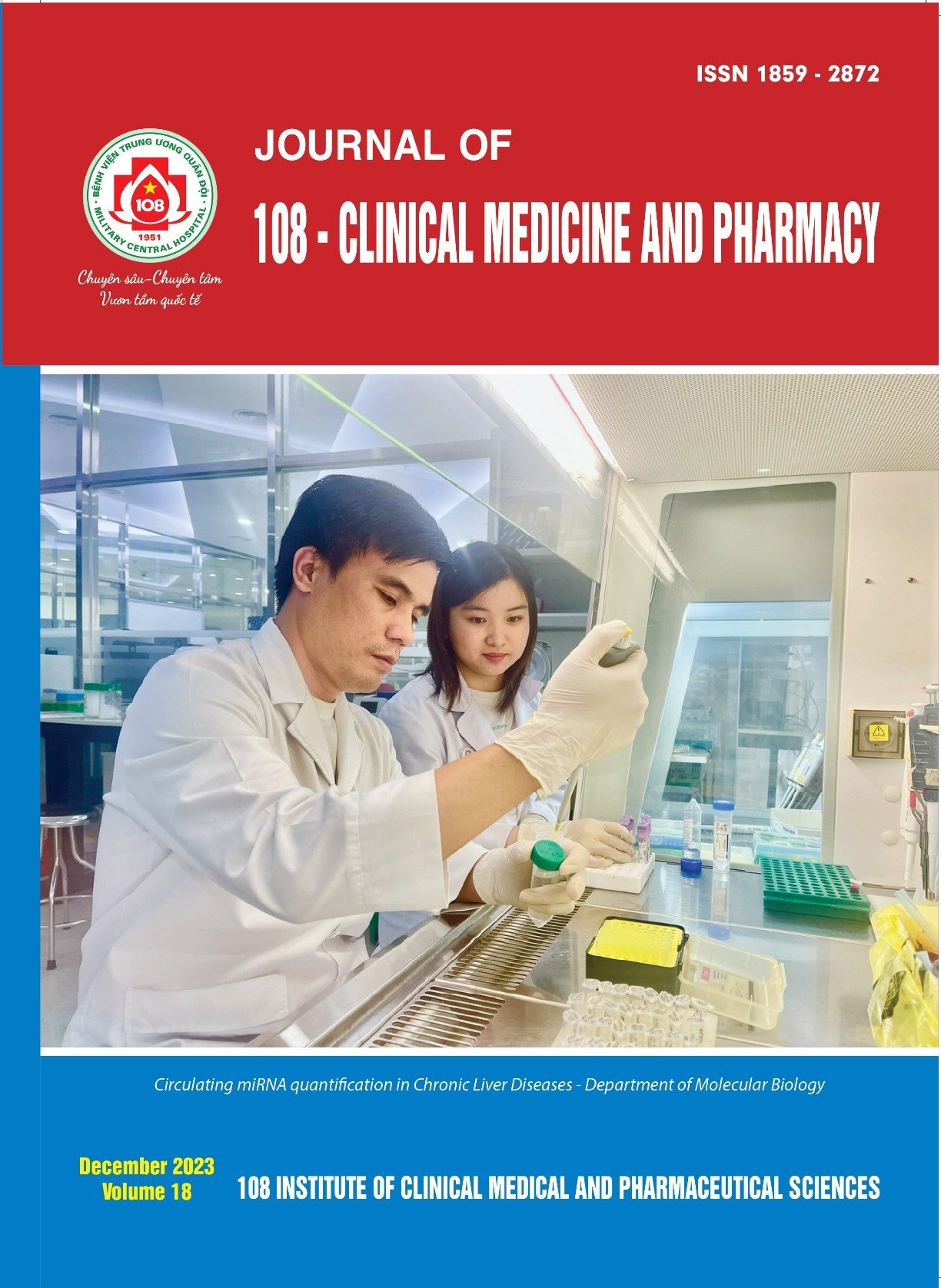A study on clinical characteristics and management of anaphylaxis in Emergency Department
Main Article Content
Keywords
Tóm tắt
Objective: The aim of this study was to describe clinical features and outcome of patients with anaphylaxis at the Emergency Department - 108 Military Central Hospital in 2021. Subject and method: A cross-sectional, retrospective descriptive study of 146 anaphylaxis patients who came to Emergency Department - 108 Military Central Hospital in 2021. Result: Drug-induced anaphylaxis accounted for 65.8%, of which: Antibiotics accounted for 17.7%, vaccines accounted for 27.1%, contrast agents accounted for 10.4%. Common symptoms were: Mucocutaneous lesion (98.6%), respiratory (16.4%), digestive (6.8%), cardiovascular (4.8%), neurological disorders (2.1%). Anaphylaxis of grade I accounted for 76.7%, grade II accounted for 18.5%, grade III accounted for 4.8% and there was no anaphylaxis of grade IV. There was no statistically significant relationship between the degree of anaphylaxis and the entry of the allergen. The fluid transfusion counted for 100%, corticosteroid use (91.1%), dimedrol (84.2%), adrenaline (23.3%), oxygen therapy (13.7%) and invasive ventilation (0.7%). Conclusion: The main cause of anaphylaxis was drug-related, the most common symptom of anaphylaxis was manifestation of mucosal skin, the anaphylactic subjects were mainly grade I. Most of patients was complete recovery.
Article Details
Các tài liệu tham khảo
2. Nguyễn Thị Thùy Ninh (2014) Nghiên cứu tình trạng sốc phản vệ ở Bệnh viện Bạch Mai. Luận văn thạc sỹ y học, Đại học Y Hà Nội.
3. Nguyen Anh Tuan (2016) Evaluating the results of anaphylaxis treatment according to the protocol of the Intensive Care Department of Bach Mai Hospital. Graduation thesis for second degree specialist.
4. Asai Y, Yanishevsky Y, Clarke A et al (2014) Rate, triggers, severity and management of anaphylaxis in adults treated in a Canadian emergency department. Int Arch Allergy Immunol 164(3): 246-252.
5. Banerji A, Rudders S, Clark S et al (2014) Retrospective study of drug-induced anaphylaxis treated in the emergency department or hospital: Patient characteristics, management, and 1-year follow-up. J Allergy Clin Immunol Pract 2(1): 46-51.
6. Beyer K, Eckermann O, Hompes S et al (2012) Anaphylaxis in an emergency setting -elicitors, therapy and incidence of severe allergic reactions. Allergy 67: 1451-1456
7. Brown AF, McKinnon D, Chu K (2001) Emergency department anaphylaxis: A review of 142 patients in a single year. J Allergy Clin Immunol 108(5): 861-866.
8. Lauritano EC, Novi A, Santoro MC, Casagranda I (2013) Incidence, clinical features and management of acute allergic reactions: The experience of a single, Italian Emergency Department. Eur Rev Med Pharmacol Sci 17(1): 39-44.
9. McLendon K, Sternard BT (2022) Anaphylaxis. StatPearls. StatPearls Publishing, Treasure Island (FL).
10. De Vera MJ, Tagaro IC (2020) Anaphylaxis diagnosis and management in the Emergency Department of a tertiary hospital in the Philippines. Asia Pac Allergy 10(1): e1.
11. Muraro A, Worm M, Alviani C et al (2021) EAACI guidelines: Anaphylaxis (2021 update). Allergy 77(2): 357-377.
12. Poziomkowska-Gęsicka I, Kurek M (2020) Clinical Manifestations and Causes of Anaphylaxis. Analysis of 382 Cases from the Anaphylaxis Registry in West Pomerania Province in Poland. Int J Environ Res Public Health 17(8): 2787.
 ISSN: 1859 - 2872
ISSN: 1859 - 2872
